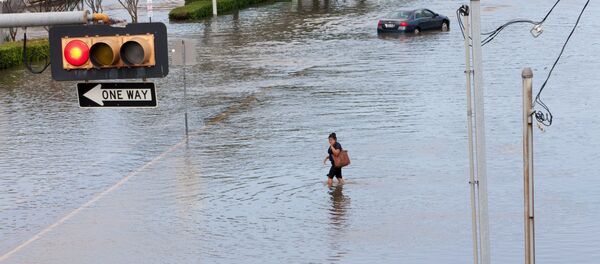The accident took lives of 9 soldiers, including Colon Vasquez. Three bodies were found immediately by the crew of the following truck, and the remaining six were discovered in a search and rescue operation.
A fully operational bridge was located about 200 feet away from where the accident occurred.
The Army investigation that followed determined that the incident was not a single mistake, but rather the result of a number of systematic faults that has led to a climate of "safety complacency" at the whole fort.
For example, Colon Vasquez commanded Private James to cross the stream despite the fact that James had received the required training to drive a massive truck through high water. In fact, Private James received her truck driving license without having completed a basic course, according to Military.com.
Overall, investigators found Fort Hood characterized by an "apathetic safety mentality," as staff pays little attention to violations of safety norms.
According to the investigation, a company commander, a platoon leader and a platoon sergeant were all aware that the soldiers that went on the patrol mission did not have adequate training to drive Army convoy vehicles.
New arrivals to Fort Hood did not receive a full briefing on local hazards at the facility, as required by Army standards. If they received the briefing, they would have known about Texas flash flooding creeks and the threat they pose, the investigation reported.
"I've never seen or heard of the local hazard course due to it never being disseminated down the chain," one soldier told investigators, according to Military.com. Others described the unit's haphazard approach to driver training for large military vehicles.
Fort Hood had seen two prior serious incidents at low water crossings since 2000, including one fatality, investigators discovered.
The "risks associated with low water crossing at Fort Hood have yet to be adequately reduced," the report stated.
Yet the facility has a long way to go, investigators say, as a flash flooding notification system is still lacking; on the day of the incident, a flood warning had been issued at 5:00 a.m., but it failed to reach the convoy that departed at 10:00 a.m..
The problems go even deeper, investigators said, as Colon Vasquez gave the order to cross the stream despite that it far exceeded his level of authority; on top of that, the convoy was not equipped with "tactical communications" to contact HQ.
A 2016 Statesman investigation found that reported accidents were on the rise at Fort Hood even before the June 2 accident, hitting a 10-year high of 109 in 2015, despite the population of active-duty soldiers falling by about 20 percent since 2011, Military.com reported.




